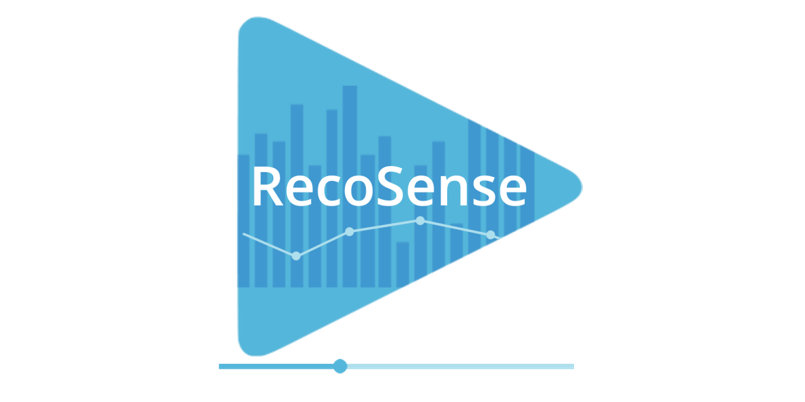To uncover the shopper’s intent and to be able to respond intelligently is the goal of every marketer. If you meet people in person, it’s much easier to do. Physical stores take notice of what shelves and displays shoppers pay attention to. They can ask if they have any queries, and they will be guided to the desired items.
eCommerce has had its challenges in this regard. Yet, it has become much more efficient for digital retailers in the last few years to get insights into their shoppers. A tremendous amount of data can be utilized in each shopper session to determine intent.
This data is then tailored to the individual and used intelligently to guide their user experience better in real-time and provide the right recommendations. All of this will make your store AI-powered and enable product discovery and personalized recommendations that generate sales.
The Intent in Real-Time
When a shopper plans to purchase something, that is their intent. By responding in a time-efficient manner and showing them what they desire, you can get business from them. This unique opportunity is available to you in eCommerce, where intent can be viewed and engaged in real-time.
The shopper expresses intent through digital movements such as clicking on items, using search engines, and finding categories. But you need to understand that intent is valuable the most in real-time since the store must react immediately to meet the shopper’s requests.
To understand this, let’s look at an example:
A mother goes to a site to find a birthday gift for her son. She searches and clicks on football games, puzzles, and chess. This way, she clearly shows an interest in these products and looks for something with similar connections.
Intent Ignored
The mother is shown gifts like princess dolls and tennis rackets, even after her behavior on the site shows that she is looking for gifts for boys. Since she doesn’t see the football and chess-related gifts, the mother might think the site is mostly for girls and ends up going elsewhere.
Intent Acknowledged
The site picks up the mother’s search and clicks of football and chess-related items. Based on that, the store displays gifts for boys. Items that do not correlate to her, such as a dollhouse, are not shown. This ensures she finds the right kind of product.
If the mother comes back but is looking for something for her daughter, the site will display girls’ gifts based on her new behavior. Hence, by acknowledging and gathering the mother’s intent, the site gained two conversion events from the shopper.
How to Uncover Shopper’s Intent in Real-Time
With AI-powered technology and intelligent search, eCommerce stores can generate personalized product recommendations based on user preferences and drive sales.
1. Understand the Shopper
Shoppers are consistently having experiences tailored to their intent – from search engine results to the suggested content shown on Netflix. They have grown accustomed to a world that identifies and caters to their desires.
Looking from the lens of eCommerce, there are so many reasons why you should know your customer.
They expect a computer hardware site to know the laptop’s preferences or the certain configuration they want. They want to avoid logging in each time to view a shopping cart they have been using for products for the last 2 days. When they search for something gender-specific, the site identifies and shows them their gender first.
All of this real-time recommendation is what makes eCommerce an interesting and engaging experience for the user, ultimately lifting your customer retention rates.
2. Save Your Data
In order to capture and address shopper intent in real-time, you must make clever use of user data and browsing history.
When trying to piece together your customers’ preferences, be sure to study user data such as visits, clicks, etc. Every visit shows the shoppers’ affinity for a certain product. It’s all of this valuable information that retailers should utilize to understand real-time intent.
To this end, ShopSense creates automatic product tags widgets for every user profile on the store. The app taps into the power of personalization to enhance the customer’s buying journey from the first to the last touch of the visit.
3. Monetizing Intent
Of course, eCommerce site owners want to focus on one type of intent: purchasing intent.
To nurture this kind of intent, one has to look at the whole structure of the site and make it so seamless that it takes it forward. Featuring recommendation bands on your product page is another way to maximize conversions for your eCommerce site.
ShopSense offers automatic product notifications to enhance the shopping experience. Shoppers get automatic notifications based on their likes and dislikes and also see customized product discovery tags. This keeps your customers coming back and allows you to uncover their real-time intent.
Tap Into Intent
Shopper’s intent is solid, ground-breaking, measurable, and highly impactful. By responding to shopper intent in real-time, engagement increases by an average of 70%, and conversion rates lift by 26%.
Leading eCommerce brands like Disney, Converse, and Uniqlo have figured out the secret to higher user engagement, conversion, and return visits. This is nothing but taking a new approach to treat every new shopper by responding to their individual intent.
Simply put, an eCommerce website that does not optimize to tap into their visitor’s purchase intent is leaving a lot of money on the table. It allows you to understand your customer’s emotional state when searching, clicking, and general-purpose browsing. As a result, you can increase both conversion and brand loyalty for the long term and the short term.

Leave a Reply